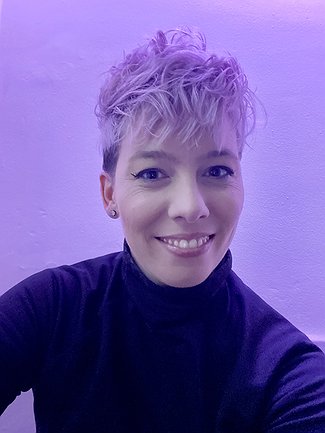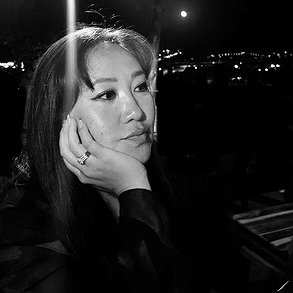FUTURE DUSK
WGSN and Coloro Unlock Their Keys to Color
How does a garment begin in the mind of a fashion designer? Does it start with shape or fabric? Many would say it begins with color. But the world of the marketplace is much greater than one designer’s imagination, which is why color trends are so important and have such a long gestation period.
Recently, WGSN and its partner Coloro announced the 2025 Colour of the Year. Named Future Dusk, the hue is described as a “dark and moody shade between blue and purple.”
“It has a sense of mystery and escapism,” according to WGSN and Coloro, “and feeds into themes of transition—whether it be moving from dark to light or dusk to dawn—making it perfect for a period of immense change. Its surreal and otherworldly qualities align with the influence of the second space age, giving Future Dusk a celestial appeal. As science and technology accelerate the space economy, commercial opportunities are coming to the forefront. From space tourism to the rise of asteroid mining, the industry that is slated to mint the world’s first trillionaire is rapidly evolving.”
Fascinated by how Future Dusk was selected, the California Apparel News reached out to Urangoo Samba, head of color for WGSN, and Caroline Guilbert, head of creative content for Coloro, to learn more about how one color is selected from a pool of 1.6 million.
CAN: How does the selection process begin, how far in advance, and how many people are involved?
US: The selection process consists of all of the WGSN and Coloro key forecasters from various regions across the world getting together at a workshop to present research and findings. We then take the insights we gained during the workshop to look at which of these key colors stands out by being the most versatile and relevant across all industries to become the Colour of the Year.
CG: We usually work on selecting colors a bit more than two years ahead of time. All colors for the season are worked on first, and then the key colors emerge. The Colour of the Year arises as one hue is identified as most relevant throughout all categories.
CAN: What are your primary sources, and how many color candidates become “finalists”?
US: Our Global Colour Forecast aligns with WGSN’s STEPIC index, which analyzes trends in Society, Technology, the Environment, Politics, Industry and Creativity. Our methodology ensures that the colors and palettes on the report truly reflect the STEPIC drivers, innovations and behaviors that will shape the year. We choose 50 colors for the season, and five get selected to become key colors. The colors in the seasonal palette are chosen to work cohesively together, with attention to head-to-toe styling, key seasonal color stories and unique color combinations that inspire creativity.
CG: At the initial stages, our team of trend experts looks at current trends from art, cultural events, cinematography, music and technology. We then fine-tune to the movements that will feed into the big ideas identified by the STEPIC framework. We also take into consideration our clients’ feedback and changes in the way they work with color.
CAN: Are you ever “wrong” by some metric? After all, fashion is fickle.
US: A great example of colors coming to the market with force from our forecasting is the Colour of the Year for 2023, Digital Lavender. We first started tracking this color in 2021 and have seen it gain momentum throughout the seasons on the catwalk and retail level, with it now hitting its full potential. Digital Lavender started in the youth sector and then moved into the premium sector and new category areas.
CAN: Fashion consists of so many changing elements. What is the role of color in fashion? What does it say about society as trends come and go?
US: Up to 90 percent of snap judgments made about products can be based on color alone, so having the right color strategy for your collection is vital. We offer seasonal, annual and long-term color palettes in order to help. The seasonal palette should bring newness, annual colors are supporting shades, and the long-term colors are there to serve core products. During times of uncertainty, and to help meet sustainability goals, investment in long-term colors is key.
CG: Color can make or break a product. It is a key differentiating factor and catalyst of growth, innovation and sustainability for brands. And, of course, color needs to be selected based on a specific context—style, material, usage, etc.—in order to be successful. Brands adopt colors that are projected to gain widespread popularity, drawing on the reliable trend insights provided by WGSN. This approach to design is economically mindful, enhancing the chances of success for products set to enter the market. By avoiding the production of items that would fail to attract interest, it minimizes waste and inefficiency. The need for newness requires color trends to adapt to consumer demand, but, with sustainability in mind, recent color trends have shown the rise of long-term color approaches that are affecting the way designers build their palettes.

























